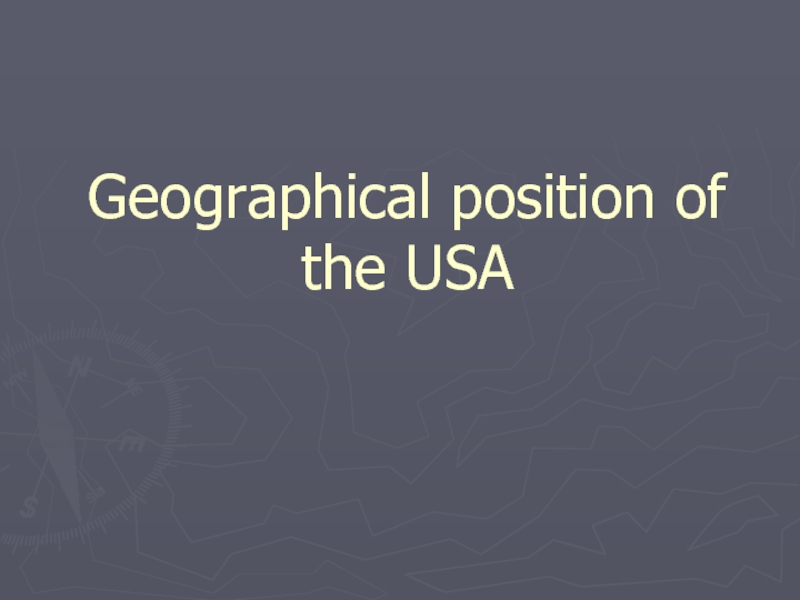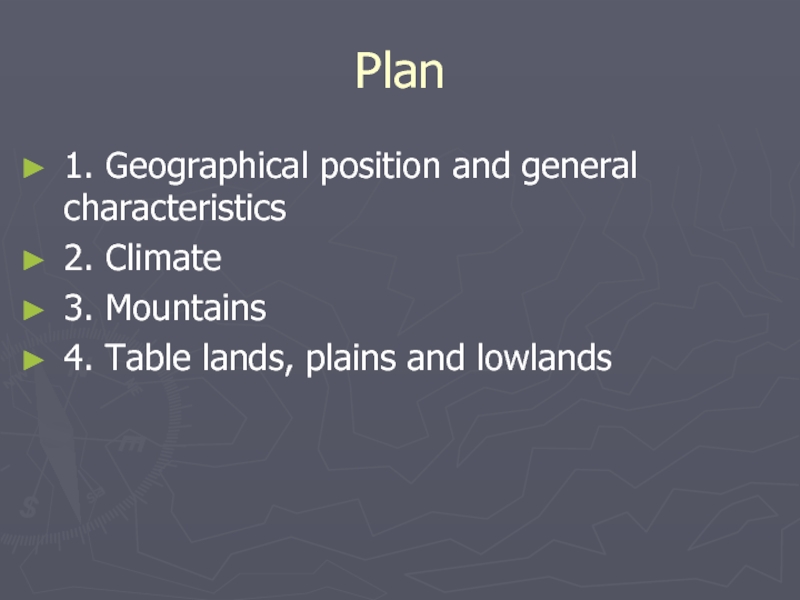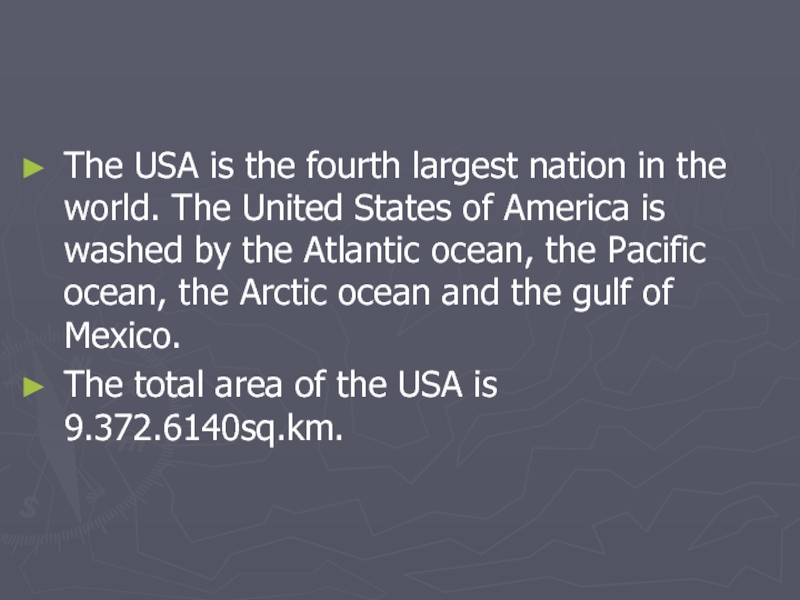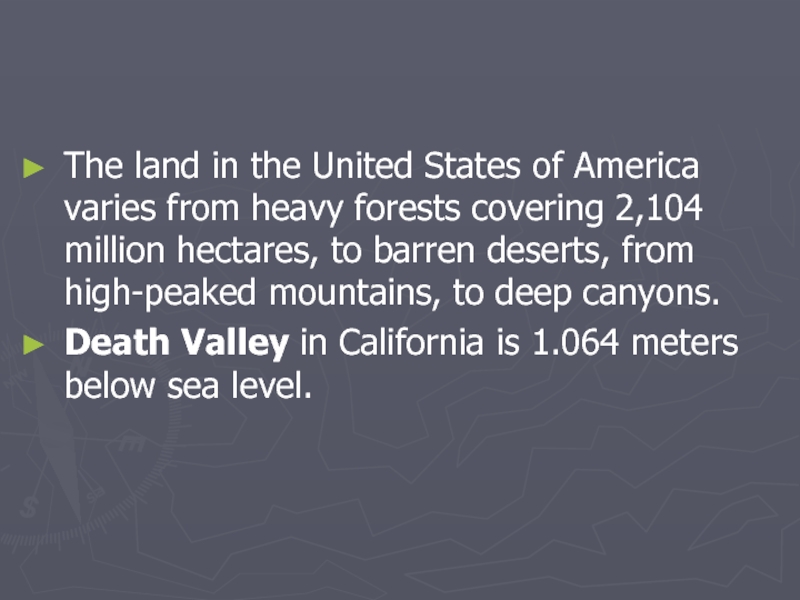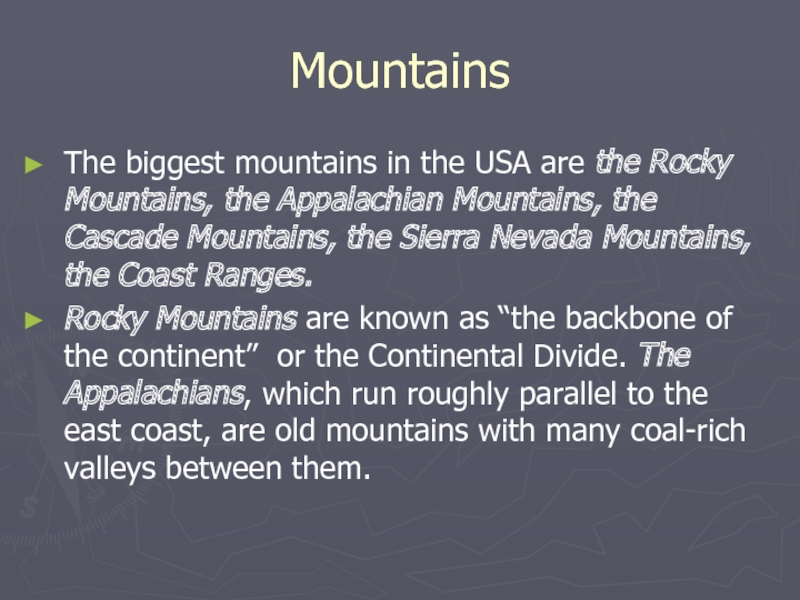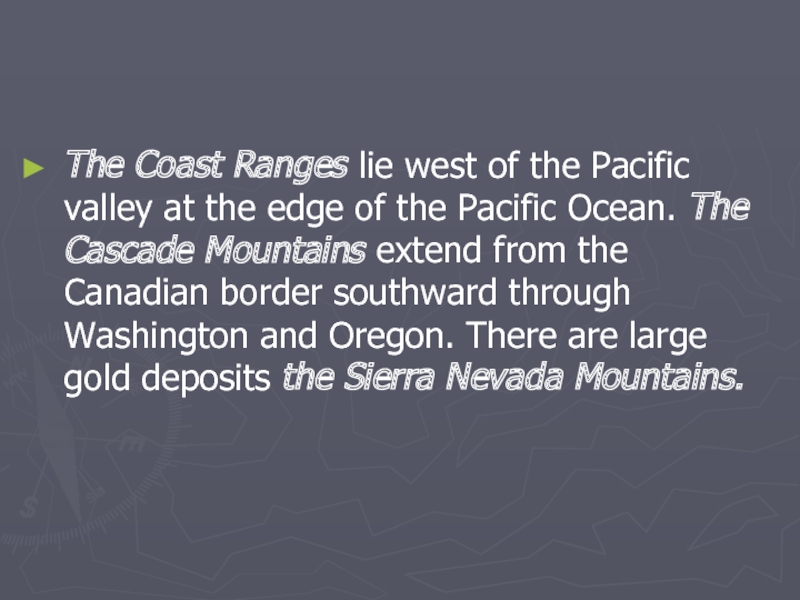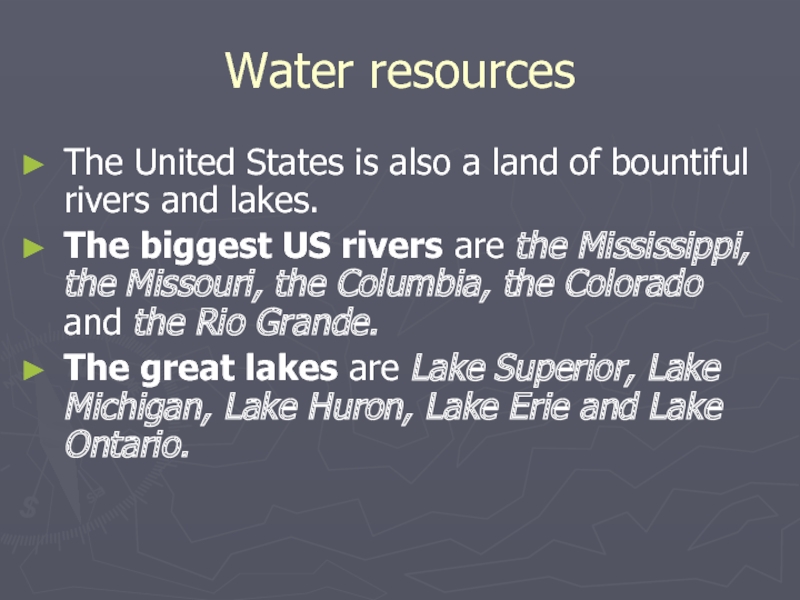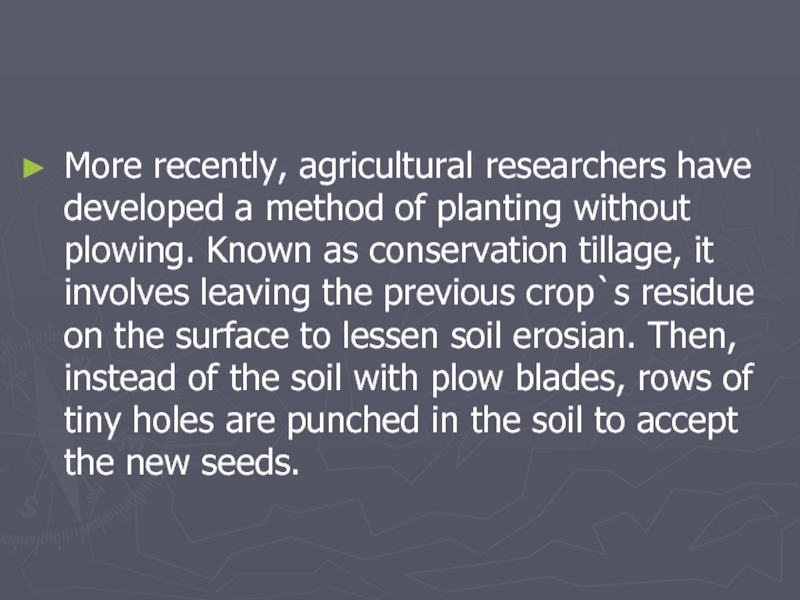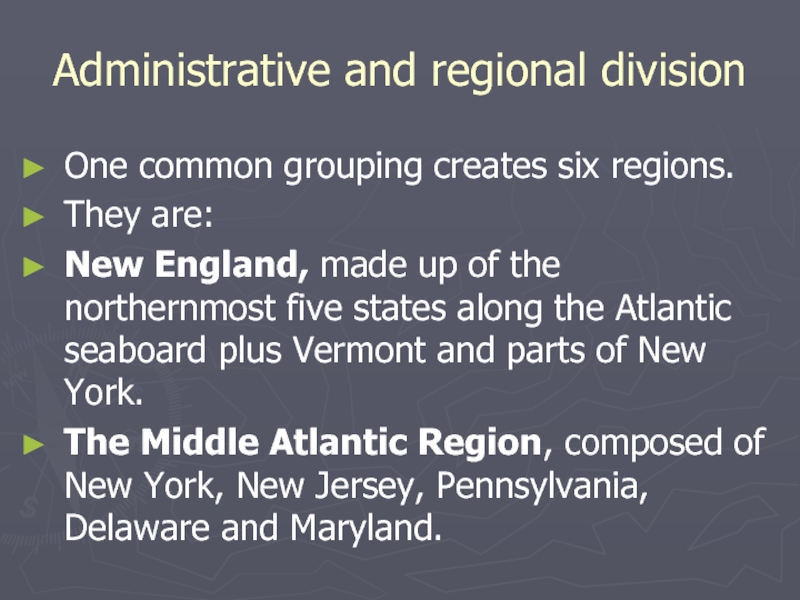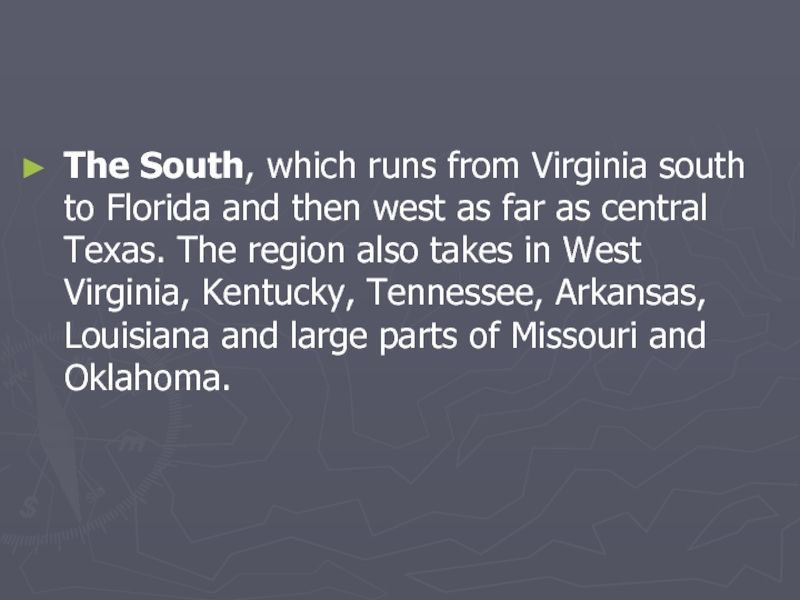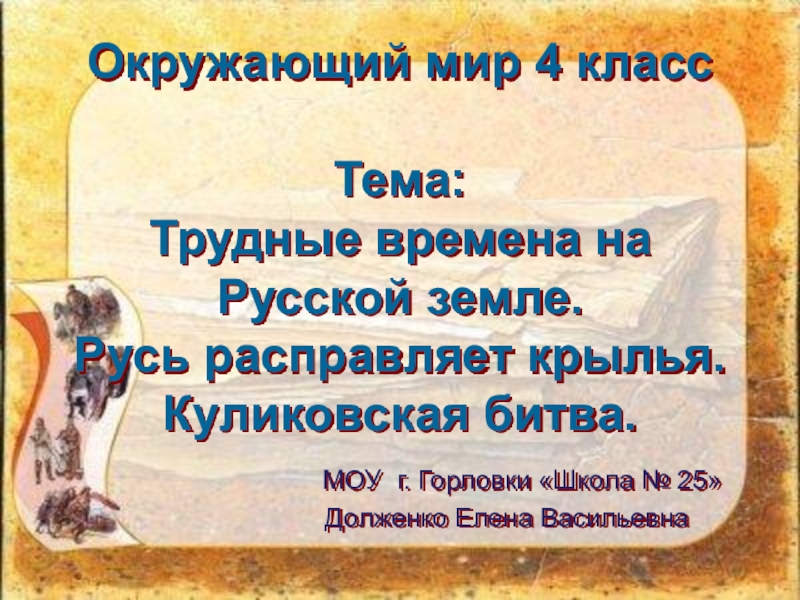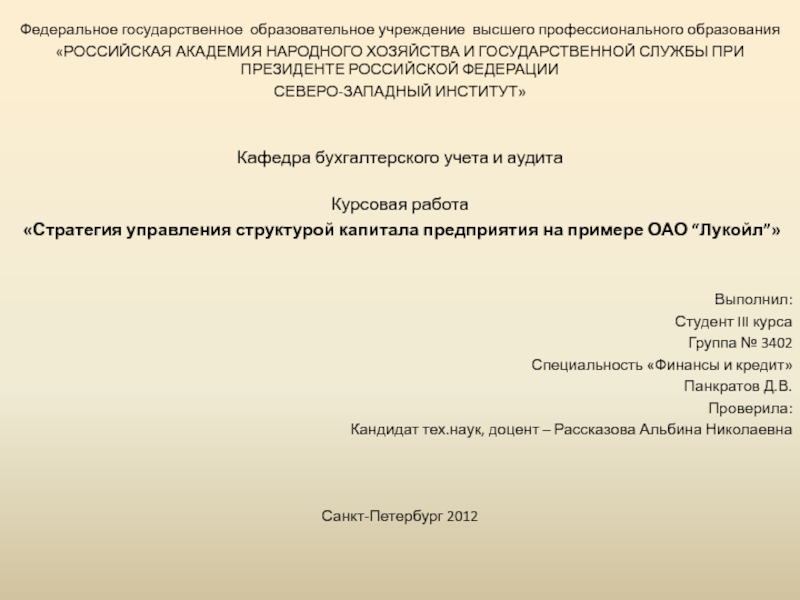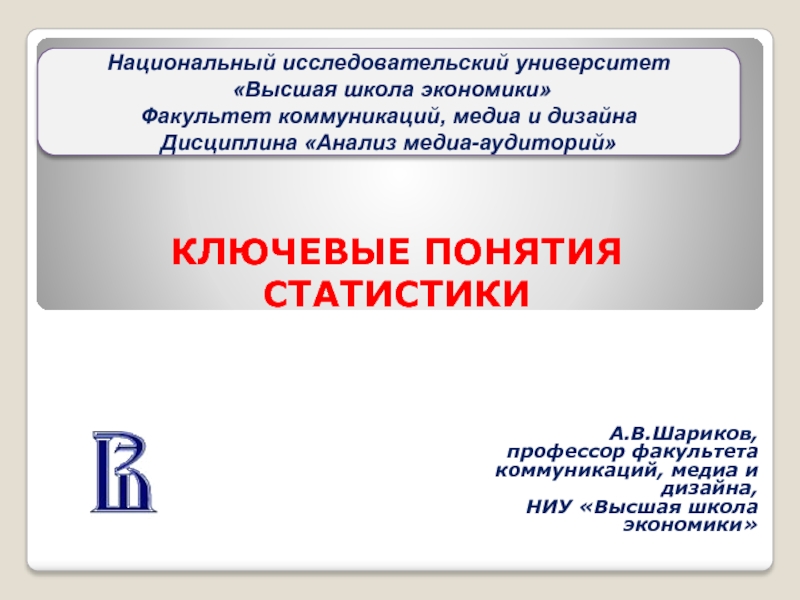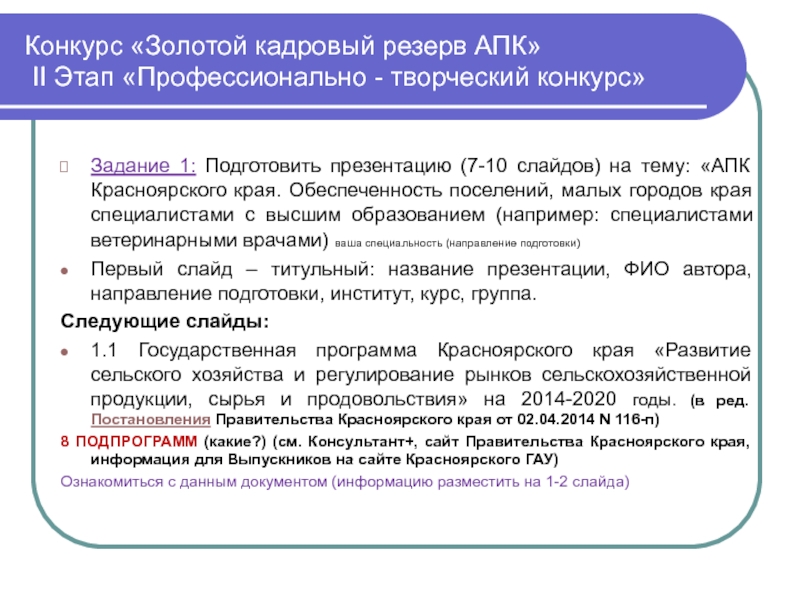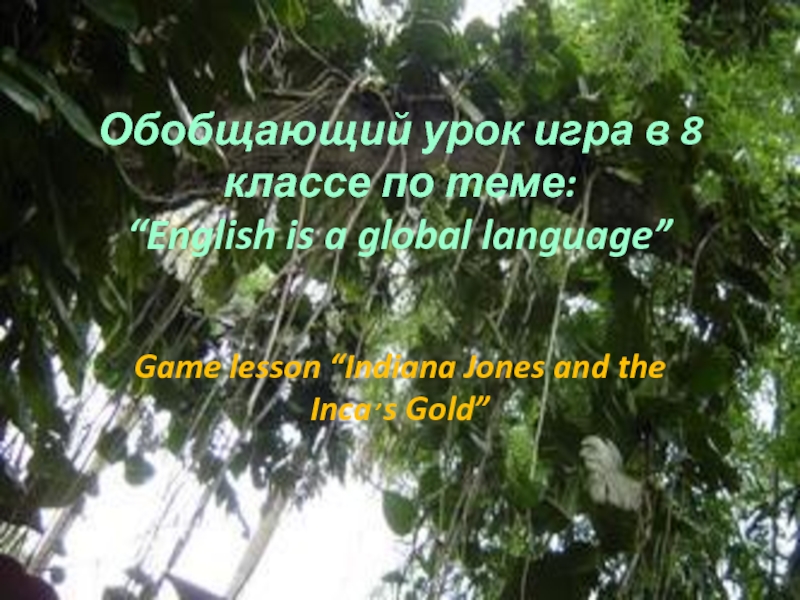Разделы презентаций
- Разное
- Английский язык
- Астрономия
- Алгебра
- Биология
- География
- Геометрия
- Детские презентации
- Информатика
- История
- Литература
- Математика
- Медицина
- Менеджмент
- Музыка
- МХК
- Немецкий язык
- ОБЖ
- Обществознание
- Окружающий мир
- Педагогика
- Русский язык
- Технология
- Физика
- Философия
- Химия
- Шаблоны, картинки для презентаций
- Экология
- Экономика
- Юриспруденция
Geographical position of the USA
Содержание
- 1. Geographical position of the USA
- 2. Plan1. Geographical position and general characteristics2. Climate3. Mountains4. Table lands, plains and lowlands
- 3. 5. Water resources6. Mineral resources7. National parks8. Administrative and regional division
- 4. The USA is the fourth largest nation
- 5. The land in the United States of
- 6. ClimateAmerica is a land of physical contrasts,
- 7. MountainsThe biggest mountains in the USA are
- 8. The Coast Ranges lie west of the
- 9. Table lands, plains and lowlandsTable lands, plains
- 10. Water resourcesThe United States is also a
- 11. Mineral resourcesUnderground, a wealth of minerals provides
- 12. National parksThe frontier experience of moving westward
- 13. More recently, agricultural researchers have developed a
- 14. Administrative and regional divisionOne common grouping creates
- 15. The South, which runs from Virginia south
- 16. The Midwest, a broad collection of states
- 17. The West, comprising Colorado, Wyoming, Montana, Utah, California, Nevada, Idaho, Oregon, Washington, Alaska and Hawaii.
- 18. Скачать презентанцию
Plan1. Geographical position and general characteristics2. Climate3. Mountains4. Table lands, plains and lowlands
Слайды и текст этой презентации
Слайд 2Plan
1. Geographical position and general characteristics
2. Climate
3. Mountains
4. Table lands,
plains and lowlands
Слайд 35. Water resources
6. Mineral resources
7. National parks
8. Administrative and regional
division
Слайд 4The USA is the fourth largest nation in the world.
The United States of America is washed by the Atlantic
ocean, the Pacific ocean, the Arctic ocean and the gulf of Mexico.The total area of the USA is 9.372.6140sq.km.
Слайд 5The land in the United States of America varies from
heavy forests covering 2,104 million hectares, to barren deserts, from
high-peaked mountains, to deep canyons.Death Valley in California is 1.064 meters below sea level.
Слайд 6Climate
America is a land of physical contrasts, including the weather.
The southern parts of Florida, Texas, California, and the entire
state of Hawaii, have warm temperatures year around; most of the United States is in the temperate zone, with four distinct seasons and varying numbers of hot and cold day each season, while the northern tier of states and Alaska have extremely сold winters.Слайд 7Mountains
The biggest mountains in the USA are the Rocky Mountains,
the Appalachian Mountains, the Cascade Mountains, the Sierra Nevada Mountains,
the Coast Ranges.Roсky Mountains are known as “the backbone of the continent” or the Continental Divide. The Appalachians, which run roughly parallel to the east coast, are old mountains with many coal-rich valleys between them.
Слайд 8The Coast Ranges lie west of the Pacific valley at
the edge of the Pacific Ocean. The Cascade Mountains extend
from the Canadian border southward through Washington and Oregon. There are large gold deposits the Sierra Nevada Mountains.Слайд 9Table lands, plains and lowlands
Table lands, plains and lowlands are
the Central Lowlands, the Colorado Plateau, the Great Plains. The
Central Lowlands are the territory between the Appalachian Mountains and the Missouri. The great tableland, through which the Colorado River has carved deep canyons, is called the Colorado Plateau. The Great Plains are situated west of the Central Lowlands.Слайд 10Water resources
The United States is also a land of bountiful
rivers and lakes.
The biggest US rivers are the Mississippi, the
Missouri, the Columbia, the Colorado and the Rio Grande. The great lakes are Lake Superior, Lake Michigan, Lake Huron, Lake Erie and Lake Ontario.
Слайд 11Mineral resources
Underground, a wealth of minerals provides a solid base
for American industry. America`s yearly production of gold is far
exceeded by the value of its petroleum, natural gas, clays, phosphates, lead and iron, even its output of sand, cement and stone for construction.Слайд 12National parks
The frontier experience of moving westward and breaking new
ground gave Americans several traditions.
The first of these was
the Yosemite Park in California. This consists of a beautiful valley surrounded by cliffs and pinnacles.Yosemite was made a national park in 1890,but it wasn`t the first. That honor went to Yellowstone, a 2.25 million-acre tract of wilderness land established as a national park in 1871.
Слайд 13More recently, agricultural researchers have developed a method of planting
without plowing. Known as conservation tillage, it involves leaving the
previous crop`s residue on the surface to lessen soil erosian. Then, instead of the soil with plow blades, rows of tiny holes are punched in the soil to accept the new seeds.Слайд 14Administrative and regional division
One common grouping creates six regions.
They are:
New
England, made up of the northernmost five states along the
Atlantic seaboard plus Vermont and parts of New York.The Middle Atlantic Region, composed of New York, New Jersey, Pennsylvania, Delaware and Maryland.
Слайд 15The South, which runs from Virginia south to Florida and
then west as far as central Texas. The region also
takes in West Virginia, Kentucky, Tennessee, Arkansas, Louisiana and large parts of Missouri and Oklahoma.Слайд 16The Midwest, a broad collection of states sweeping westward from
Ohio to Nebraska and southward from North Dakota to Kansas,
including eastern Colorado.The Southwest, made up of western Texas, portions of Oklahoma, New Mexico, Arizona, Nevada and the southern interior area of California.
